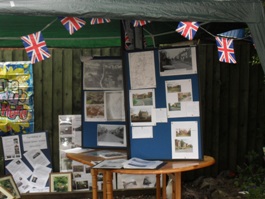 Last month we had an enquiry about the Basingstoke Road which prompted some research in the area and the following two businesses were recorded from our memories file.
Last month we had an enquiry about the Basingstoke Road which prompted some research in the area and the following two businesses were recorded from our memories file.
Ash Cottage on the Basingstoke Road was occupied by the Belcher family. Leonard Belcher suffered a severe disability as a child and could only walk with a walking stick. However on completing his schooling, he was trained to repair boots and shoes and eventually set up his own successful business with a workshop ably assisted by his mother to begin with. Later on his wife looked after the shop. This remained for many years from the 1920s to the mid 1960s and perhaps the 70s when he retired.
Janet Bunch remembered him with a pipe and his stick. He sold second hand shoes and Janet coveted a pair of red boots which probably wouldn’t fit her and was dismayed when they were sold to someone else. In 1957, Ron Holyday, whose grandfather lived almost next door, can remember buying some leather boot laces from Leonard. They were sliced from a long, strip of leather. The boot repair business was a shop at the rear of Ash Cottage and part of Leonard’s home.
There was another boot repairer in the village called Arthur Thorne. Whether he was at the same premises is not clear.
Spencers Wood Stores
The shop next door to Belchers, in the late 1900s, was originally a draper’s shop selling clothes, as well as drapery owned by Mr Charles Ballard. It was taken over by Mr Sant, by 1910 until the 1920s, selling similar wares. Sant would also used to sell his goods door-to-door travelling the local area. Early in the 1920s, it closed and changed to a general shop and café with net curtains half way up across the window behind which the diners would eat in an area separated from the shop by a wooden partition. Robin Drinkwater can remember his brother, Arthur, holding his wedding reception there.
There were two others who were drapers namely, Edward Hatch in the 1920s and his son and Frank Austin, in the 1930s, shown as an outfitter and draper. As far as we know, the general store was run by Miss Alice Mulgrew as a grocer and confectioner in the 1940s and then in the 1950s was owned by Brian Davey. When Mr Thomas owned it, it was a grocers and café. The next owner was Mr Hibberd and finally Mr Pandher. It has been called London House Stores.
Margaret Bampton







